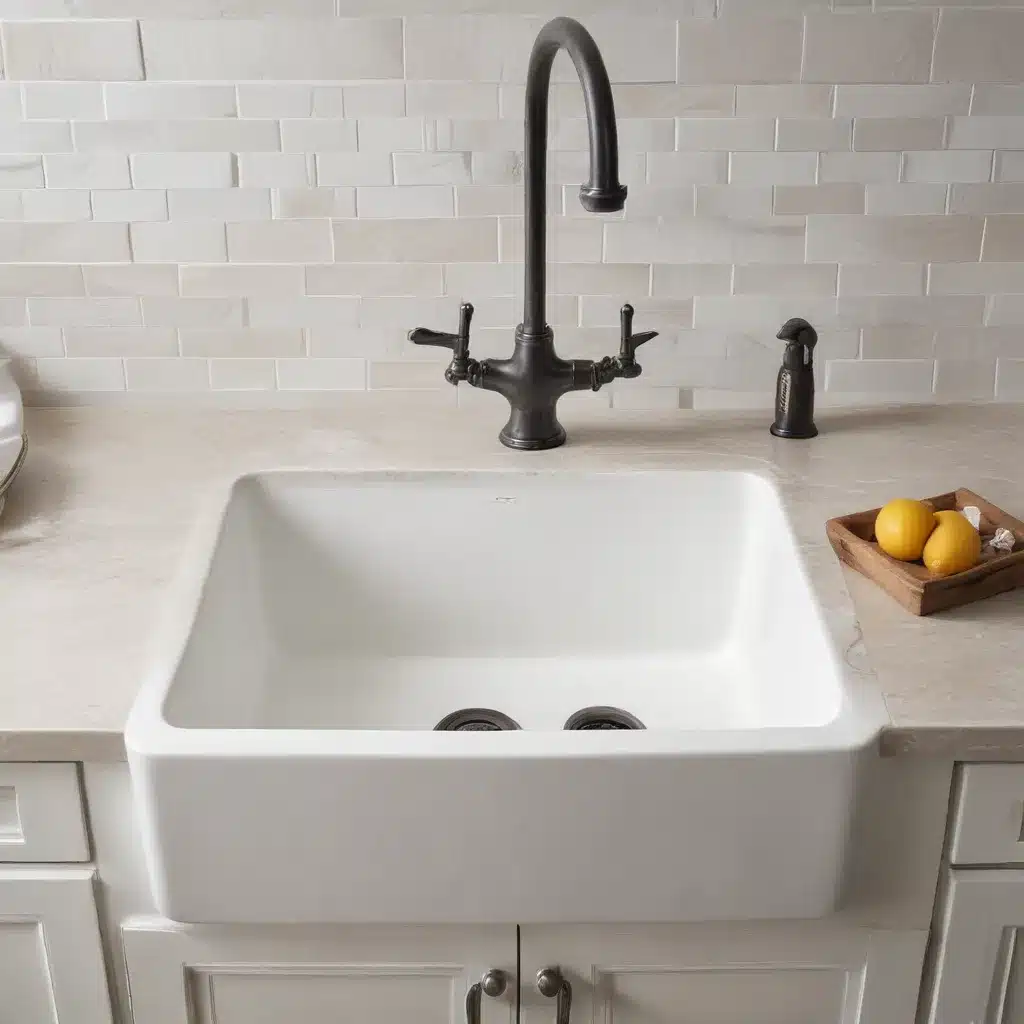
Understanding the Anatomy of Clogged Sinks
Clogged sinks are a common plumbing issue that many homeowners face, especially in the kitchen. These blockages can be caused by a variety of factors, including:
- Food Debris: Over time, food particles, grease, and other organic matter can accumulate in the sink’s drain, leading to a buildup that restricts water flow.
- Hair and Soap Scum: In bathrooms, a combination of hair, soap, and shampoo residue can create a stubborn clog.
- Foreign Objects: Accidentally dropping small items, such as jewelry, cotton swabs, or even a child’s toy, down the drain can obstruct the pipe.
- Mineral Deposits: Hard water can leave behind mineral buildup that gradually narrows the drain’s diameter, reducing its efficiency.
Understanding the underlying cause of a clogged sink is the first step in finding an effective solution. Let’s explore various DIY techniques to tackle this common plumbing problem and keep your kitchen sinks flowing freely.
Unclogging with Household Tools
Before reaching for harsh chemical drain cleaners, try these simple DIY methods using common household items:
The Plunger Technique
The trusty plunger is often the first line of defense against a clogged sink. Follow these steps to use it effectively:
- Fill the sink with a few inches of water, just enough to cover the plunger’s cup.
- Firmly place the plunger over the drain opening, ensuring a tight seal.
- Forcefully plunge up and down several times, creating a suction that can dislodge the clog.
- Repeat the plunging motion until the water drains freely.
The Baking Soda and Vinegar Method
This natural, non-toxic solution can be surprisingly effective in breaking down organic matter in the drain:
- Pour 1/2 cup of baking soda down the clogged drain.
- Follow with 1/2 cup of white vinegar.
- Allow the mixture to fizz and work for about 15 minutes.
- Flush the drain with hot water to wash away the loosened debris.
The Wire Coat Hanger Trick
If you don’t have a plunger or the baking soda-vinegar method doesn’t work, a straightened wire coat hanger can be a useful tool:
- Unwind the coat hanger and straighten it as much as possible.
- Carefully insert the end of the hanger into the drain, gently probing and maneuvering it to break up the clog.
- Once the obstruction is dislodged, run hot water to flush the drain.
Professional-Grade Drain Cleaning Tools
For more stubborn clogs, you may need to invest in some specialized plumbing tools. Consider these options:
Drain Auger or “Plumber’s Snake”
A drain auger, also known as a “plumber’s snake,” is a long, flexible metal cable with a corkscrew-like end that can be fed into the drain to break up and remove blockages.
- Insert the end of the auger into the drain opening and crank the handle clockwise to extend the cable.
- Continue feeding the cable until you feel it hit the clog, then crank the handle in reverse to retrieve the cable and the dislodged debris.
- Flush the drain with hot water to clear any remaining particles.
Wet/Dry Vacuum
A wet/dry vacuum can be an effective tool for removing standing water and sucking up any loose debris in the drain.
- Place the vacuum hose directly over the drain opening, ensuring a tight seal.
- Turn on the vacuum and let it run for several minutes to extract the water and any loosened material.
- Check the vacuum’s collection tank to ensure all the debris has been removed.
Chemical Drain Cleaners (As a Last Resort)
While chemical drain cleaners should generally be avoided due to their harsh nature, they can be a viable option for particularly stubborn clogs:
- Carefully read and follow the instructions on the product label.
- Pour the recommended amount of cleaner into the clogged drain and allow it to work for the specified time.
- Flush the drain with hot water to remove any remaining debris.
Caution: Always use chemical drain cleaners in a well-ventilated area and avoid prolonged skin or eye contact.
Preventative Maintenance for Clog-Free Sinks
To maintain a healthy, clog-free sink, consider the following preventative measures:
- Install Sink Strainers: These inexpensive devices fit over the drain opening, catching large debris before it can enter the pipes.
- Regularly Clean the Drain: Use a bent wire, zip-it tool, or plumber’s snake to remove buildup from the drain opening on a monthly basis.
- Avoid Pouring Grease Down the Sink: Instead, let cooking oils and fats cool, then dispose of them in the trash.
- Use a Garbage Disposal Properly: Run the disposal with cold water to help it grind up food waste effectively.
- Schedule Professional Cleanings: Periodic drain cleaning by a licensed plumber can remove built-up debris and prevent future clogs.
By incorporating these proactive measures into your plumbing maintenance routine, you can help keep your kitchen sinks flowing freely and avoid the hassle of clogged drains.
Conclusion
Clogged sinks can be a frustrating plumbing issue, but with the right DIY techniques and preventative care, you can conquer this common problem and maintain a functional, flowing kitchen. Remember to always prioritize safety and consult a professional plumber if you encounter a clog that persists or requires more advanced solutions.
For all your plumbing and heating needs, visit DD Plumbing and Heating to explore our range of services and schedule an appointment with our team of experienced technicians.


